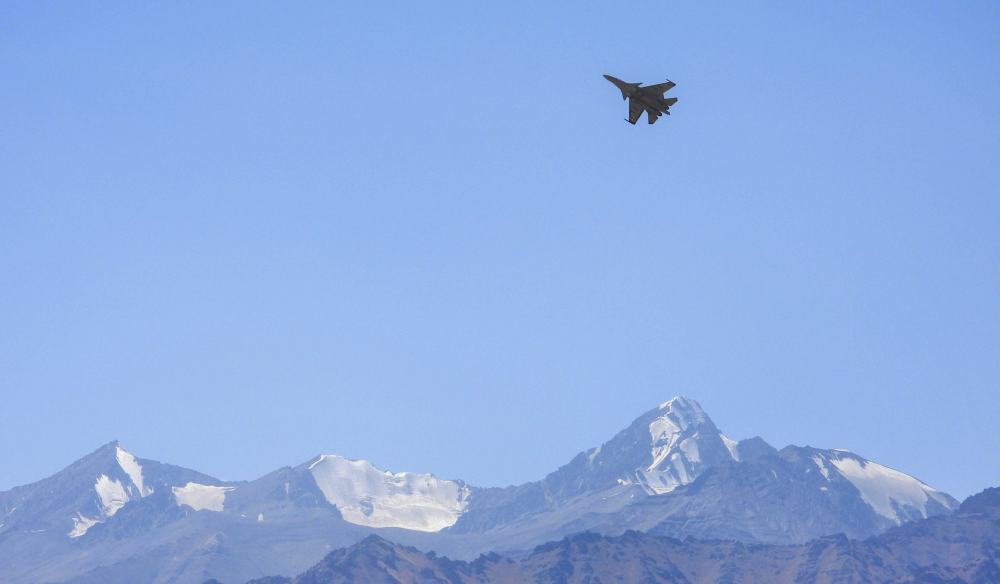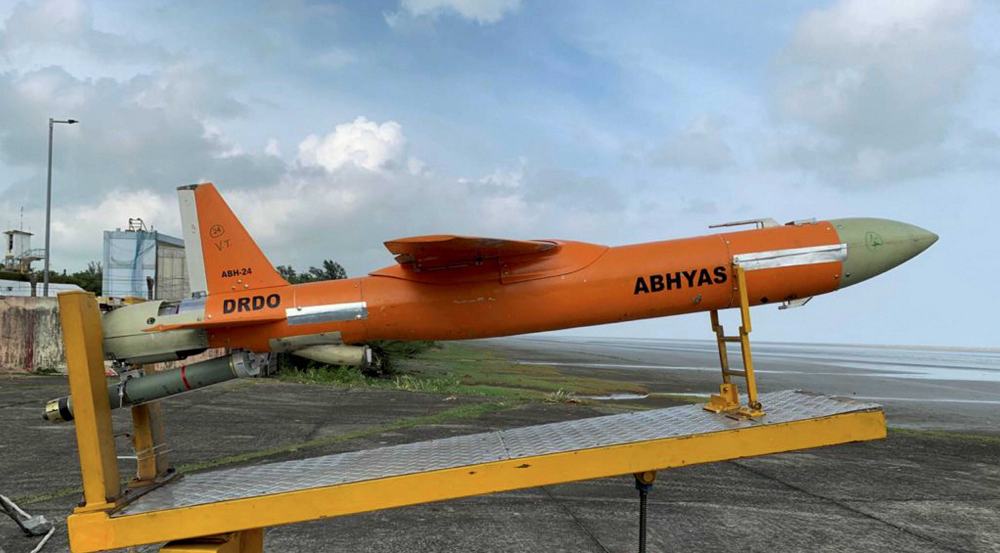
IAF Sukhoi Su-30MKI jet flies over Ladakh region amid border tension with China, in Leh, Tuesday, Sept. 22, 2020. A PTI Photo
NEW DELHI (PTI): The sixth round of marathon military talks between India and China focused on ways to defuse rising tensions along the treacherous and high-altitude friction points in Eastern Ladakh in line with their recent agreement and considering the approaching harsh winter, government sources have said.
There was no official word on the outcome of Monday's talks in Eastern Ladakh that lasted 14 hours but it is learnt both sides agreed to meet again to take forward the negotiations on the "intricate and complex" disengagement process.
The sources on Tuesday said the Chinese side insisted on withdrawal of Indian troops from the strategic heights around the southern bank of Pangong lake but the Indian delegation clearly conveyed that China's PLA first vacate the areas from Finger 4 to Finger 8. The mountain spurs in the area are referred to as Fingers.
A common assessment that emerged at the meeting was there should not be any further escalation in tensions as the situation had deteriorated in the Chushul sector following three incidents of shots being fired in the air by the Chinese troops in the last three weeks, the sources said.
The sources said there was a shared view that disengagement of troops was necessary to bring down the tensions and both sides should continue the diplomatic and military talks to finalise the broad contours.
At the talks, the Indian side pressed for an early and complete disengagement of Chinese troops from all the friction points and insisted it was for China to take the first steps to de-escalate the situation, government sources said.
"The focus was to defuse tensions," a source said.
The Indian side conveyed its position as the two delegations extensively deliberated on implementing the five-point agreement reached between India and China on September 10 to ease the border standoff that began in early May.
It is learnt that the Indian delegation also insisted on a time-bound implementation of the agreement finalised during the extensive talks between External Affairs Minister S Jaishankar and his Chinese counterpart Wang Yi in Moscow on the sidelines of a Shanghai Cooperation Organisation(SCO) meet.
The sources said the agenda for the Monday talks was to chart a specific timeline for implementation of the five-point agreement.
The agreement aimed at ending the tense standoff included measures like quick disengagement of troops, avoiding action that could escalate tensions, adherence to all agreements and protocols on border management and steps to restore peace along the LAC.
In Beijing, Chinese Foreign ministry Spokesman Wang Wenbin said the two sides exchanged in-depth views on easing the current situation in the border areas.
"The two sides agreed to continue maintaining dialogue and consultation on this front," Wang told a media briefing when asked to provide details on the latest round of military talks.
Indian government sources said the talks began at around 9 am in Moldo on the Chinese side of the Line of Actual Control (LAC) across India's Chushul sector in eastern Ladakh and ended at 11 PM.
The two sides also mentioned the harsh winter in the Ladakh region beginning October when temperatures fall upto minus 25 degree Celsius and oxygen becomes scarce, the sources said.
The Indian delegation was headed by Lt Gen Harinder Singh, the commander of the Leh-based 14 Corps of the Indian Army.
For the first time, the Indian team for the military talks also included a senior official from the Ministry of External Affairs (MEA). MEA Joint Secretary Naveen Srivastava, who has been engaged in diplomatic talks with China on the border row under the framework of the Working Mechanism for Consultation and Coordination (WMCC) on border affairs, was part of the delegation.
The team also comprised Lt Gen PGK Menon, who is expected to succeed Singh as the commander of the 14 Corps next month.
At the previous five rounds of Corps commander-level talks, the Indian side insisted on complete disengagement of Chinese troops at the earliest, and immediate restoration of status quo ante in all areas of eastern Ladakh prior to April.
The fifth round of Corps commander talks on August 2 lasted for nearly 11 hours while the fourth round went on for nearly 15 hours on July 14.
The sources said the Indian Army has made elaborate arrangements to maintain the current level of troop and weapons deployment in all forward areas in eastern Ladakh and other sensitive high-altitude sectors in the harsh winter months.
They said the situation remained tense at both the southern and northern bank of the Pangong lake area as well as in other friction points.
There have been at least three attempts by the soldiers of the Chinese People's Liberation Army(PLA) to "intimidate" Indian troops along the northern and southern bank of Pangong lake area in the last three weeks where even shots were fired in the air for the first time at the LAC in 45 years.
The situation in Eastern Ladakh deteriorated after China unsuccessfully attempted to occupy Indian territory in the Southern bank of Pangong Lake on the intervening night of August 29 and 30.
On September 7, the Chinese troops again made an unsuccessful bid to close in on the Indian position and even fired shots in the air in the Mukhpari area of Rezang-La ridgeline on the southern bank of Pangong lake.
As Jaishankar and Wang were set to hold talks in Moscow, Chinese soldiers fired a barrage of "warning shots" in the air on the North Bank of Pangong lake to "intimidate" the Indian troops, Indian Army sources had said.
India occupied a number of strategic heights on the southern bank of Pangong lake and strengthened its presence in Finger 2 and Finger 3 areas in the region to thwart any Chinese actions.
China has been occupying the areas between Finger 4 and Finger 8.
 Previous Article
Previous Article Next Article
Next Article













The Indian Air Force, in its flight trials evaluation report submitted before the Defence Ministry l..
view articleAn insight into the Medium Multi-Role Combat Aircraft competition...
view articleSky enthusiasts can now spot the International Space Station (ISS) commanded by Indian-American astr..
view article